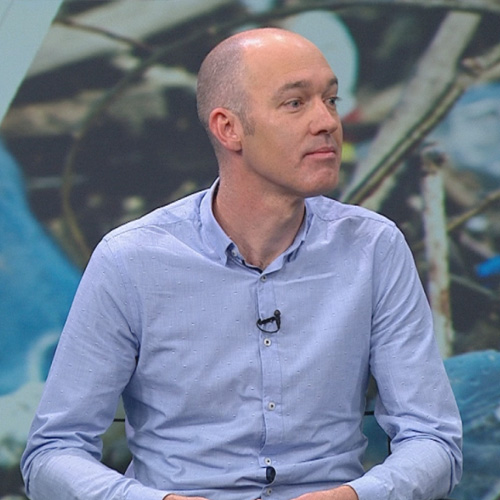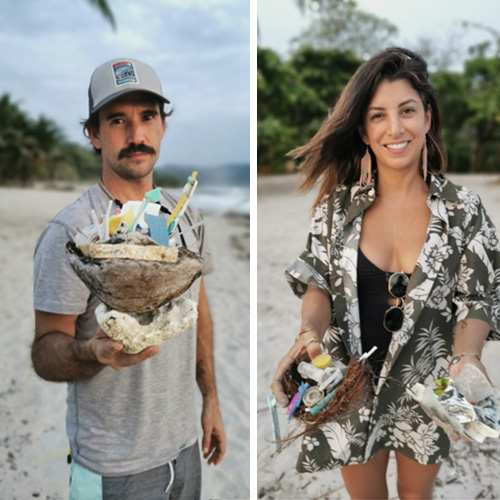
There are compelling reasons for centering female voices in environmental strategies and waste management. Dive into a transformative journey where the principles of biomimicry and women’s unique perspectives converge, heralding a brighter, more sustainable future for our planet.

In this article, we’ll delve into the indispensable role of women in waste management and how centering their voices can lead to more effective environmental strategies inspired by Biomimicry Life’s Principles.
Understanding the gravity of waste management isn’t merely about environmental welfare. It’s about recognizing the symbiotic relationship between humans and the environment. When we amplify the voices of women, who have historically demonstrated holistic approaches to problem-solving, we unlock a deeper connection with the environment and catalyze more sustainable strategies.
Grasping the urgency and magnitude of environmental challenges is pivotal and by listening and learning from women at the forefront of waste management, we not only achieve gender equality but also unlock the potential for innovative, sustainable solutions through encouraging diversity.
Those who embrace this perspective in the PET polymers industry are likely to find themselves at the cutting edge of global environmental change, reaping the benefits of improved ecological health and societal progress.
Let’s dive in.
Women as stewards of the environment
Women, historically, have shown a strong connection to the environment, often being the primary caregivers and resource managers in their communities. Their unique experiences and insights are essential in crafting holistic waste management solutions. An excellent example from PET Heroes 2024 cohort is Dian Kurniawati, whose work in Indonesia embodies one of the principle tenets of Biomimicry. By advocating for PET recycling, waste reduction and sustainable living, her organization Tridi Oasis is driving community transformation. Contrast this with communities that fail to take into account female voices, and the difference is clear: her approach ensures a resilient future, while others face heightened environmental risks. Her story shows how female perspectives, often rooted in nurturing and community can drive sustainable solutions tailored for long-term welfare of the community.
The circular Vision of waste management
Nature functions in cycles, where waste from one organism becomes sustenance for another. Adopting this approach in waste management can revolutionize our methods and outcomes. Another leader in this field is Dame **Ellen MacArthur,** who has been a vocal advocate for the circular economy since she founded the Ellen MacArthur Foundation in 2009, emphasizing waste’s enormous potential as a resource. Companies that heed her insights transform their waste into profitable ventures, while those who don’t miss out on these opportunities. Furthermore the case of EMF shows clearly what many already know, women lead, they often emphasize collaboration, inclusivity, and long-term vision.
Local solutions for global impact
Women, often at the forefront of community-based challenges, understand the ground realities of waste issues and can drive practical policy solutions. Solutions that resonate with local cultures and resources tend to be more successful and sustainable. Women, deeply rooted in their communities, offer perspectives that are both locally attuned and responsive. Another inspirational leader from our list of PET Heroes 2024, Cordie Aziz-Nash is showcasing this in Ghana where she has harnessed the power of localized strategies built on empowering female waste pickers. By transforming plastic waste into art, she taps into the local culture while addressing a global issue. Communities lacking such innovative local leaders may struggle to find solutions that resonate with their citizens. In Ghana, women are leading the way in the fight to close the loop on plastic waste in their local communities.
Nature-inspired innovations
By taking a close look at Biomimicry Life’s Principles we can see clearly that nature and in particular the female side of the equation, with billions of years of evolutionary wisdom, has answers to our most pressing challenges. Integrating these principles can lead to groundbreaking strategies for PET plastic, which is something that is central to the grass roots work of Christina Jaeger who employs biomimicry in her projects. Her organization, the Yusuf Environment Fund, emphasizes life-friendly chemistry and cooperative relationships with gender equality at the helm. Communities that don’t take these nature-based solutions into account and lack forward-thinking approaches may continue using harmful chemicals, posing risks to both human health and the environment.
Collaborative strengths
Cooperation is a cornerstone of resilience in nature. In waste management, collaborations between different stakeholders can lead to multifaceted solutions. Something women leaders like Aziz-Nash exemplify, partnering with local artists and environmentalists. In contrast, siloed approaches can lead to fragmented efforts and missed opportunities. Collaborative efforts based on 3.8 billion years of research and development are going to be essential in tackling global challenges. Women, with their intrinsic ability to connect and collaborate, can foster these partnerships. Centering women in our waste management strategies is not just a matter of gender equality. It’s about harnessing diverse insights, experiences, and knowledge to craft solutions that resonate with nature’s wisdom. Whether you are a social entrepreneur, systems change investor or chief sustainability officer at a plastic packaging company recognizing this imperative and taking actionable steps to put women at the center of waste management will reap enormous rewards.
We’re all in this together and the challenges of reshaping our world for the better are going to be considerably easier with women working wonders for our planet.
JOIN THE MOVEMENT
If you like this content and would like to help close the loop on plastic waste then join the adaPETation® Network by clicking on the button below.
Share it
THE HISTORY OF PLASTIC
Throughout the history of plastic, PET has been crucial in keeping food fresh with lightweight and durable packaging solutions that have helped reduce food waste for almost a century. Learn all about the invention of plastic and the important role it has played feeding people and saving the lives of humans and elephants in the adaPETation® timeline of the history of plastic.





